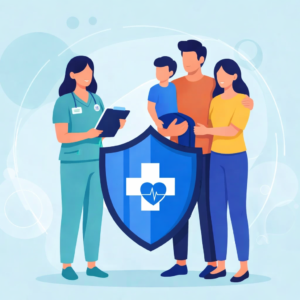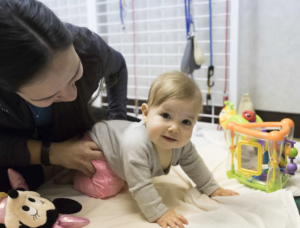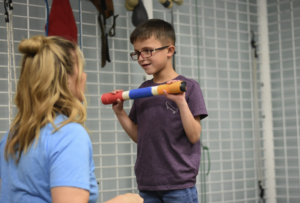Applied Behavior Analysis (ABA) therapy is one of the most widely used supports for children with autism and other developmental differences. It’s a powerful tool for teaching new skills, shaping behavior, and helping kids succeed in daily routines. But ABA isn’t designed to cover every area of a child’s growth. That’s where physical therapy (PT), occupational therapy (OT), and speech-language pathology (SLP) step in—filling the gaps and creating a more complete plan for your child’s success.
The Limits of ABA on Its Own
ABA is excellent for teaching structured skills, routines, and social behaviors. But on its own, it doesn’t fully address things like:
- Big motor skills (balance, posture, coordination, strength)
- Small motor skills (holding a pencil, using utensils, getting dressed)
- Sensory processing (challenges with sound, touch, or movement)
- Communication (speech sounds, vocabulary, conversation, social use of language)
- Oral motor skills (feeding, swallowing, speech clarity)
Without extra support, a child may make progress with behavior but still struggle with the physical, sensory, or communication skills they need to be more independent.
How PT, OT, and SLP Support ABA
Physical Therapy (PT)
PT builds the physical foundations kids need to keep up with learning and daily life. For example, if a child can follow directions in ABA but doesn’t have the core strength to sit up in a chair, they may miss out on the lesson. PT helps kids gain strength, balance, and endurance so they can fully participate.
Occupational Therapy (OT)
OT focuses on everyday skills and managing sensory challenges. Many children in ABA struggle with transitions, meltdowns, or staying on task because their sensory needs aren’t met. OT helps kids handle sensory input, making it easier for them to focus and feel calm. It also teaches practical skills like handwriting, feeding, self-care, and getting dressed—things ABA doesn’t specifically target.
Speech-Language Pathology (SLP)
Communication opens doors. While ABA might teach a child to use a token or picture card to make a request, SLP goes deeper—helping kids learn real speech, vocabulary, and conversation skills. SLP also works on social language, so kids can connect with others and build relationships.
Why Working Together Matters
Kids do best when therapies are connected, not separate. When PT, OT, SLP, and ABA providers team up:
- Behavior plans actually stick, because the physical, sensory, and communication challenges are being supported.
- Skills learned in therapy carry over into real life, not just during sessions.
- Families see progress in all areas of development—not just in one piece of the puzzle.
ABA is important, but it works best as part of a bigger picture. True progress happens when every part of a child—body, brain, behavior, and communication—is supported.
Helping Kids Move, Communicate, and Thrive
At Crawl Walk Jump Run Therapy Clinic, we believe kids reach their fullest potential when therapies work hand in hand. PT, OT, and SLP bring vital skills to the table, and when combined with ABA, they set the stage for lasting growth and independence.
If your child is in ABA therapy right now, consider adding PT, OT, or SLP to round out their care. Together, these therapies don’t just help kids follow directions—they help them move, communicate, and thrive with confidence.




